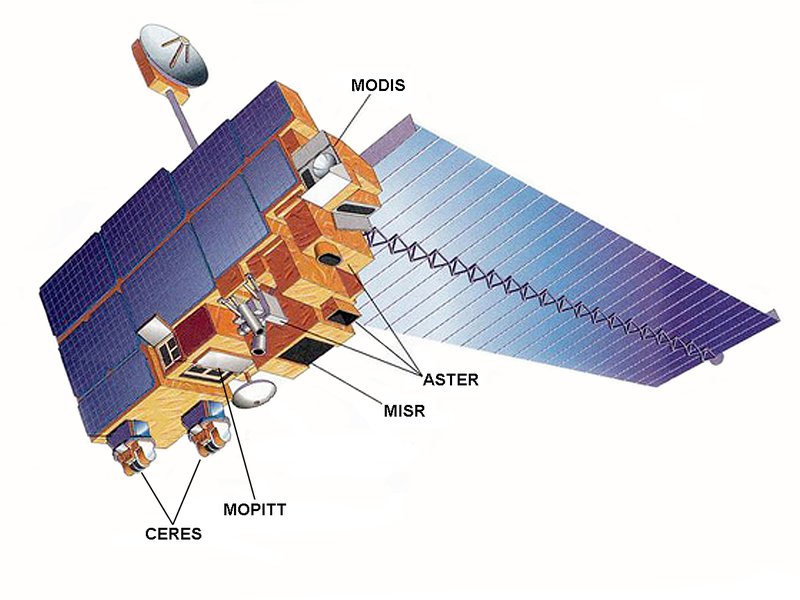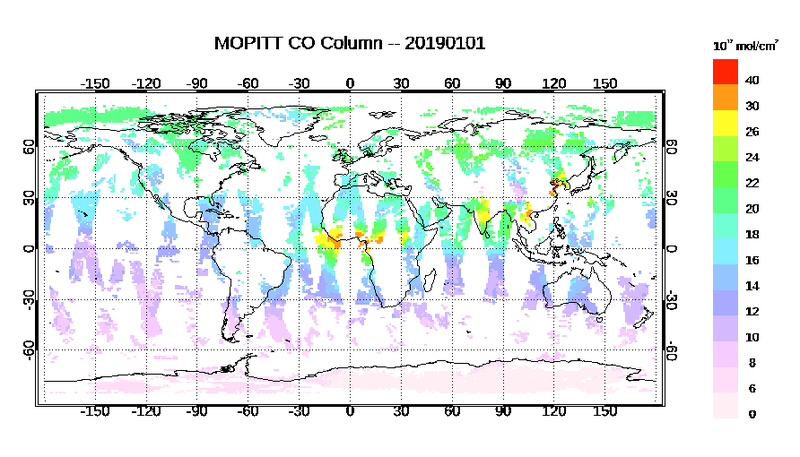
The MOPITT (Measurements of Pollution In The Troposphere) instrument was the first space based instrument that targeted measurements of carbon monoxide (CO) continuously on a global scale. MOPITT was launched on-board the Terra mission satellite on December 18th, 1999 and started nominal scientific measurements in March 2000.

The Terra mission is the first of a series of NASA's Earth Observing System (EOS) program for long-term monitoring of the Earth environment. It flies in a sun-synchronous polar low Earth orbit (LEO) with an orbital period of about 98 min and an altitude of 705 km with an inclination angle of 98.4°, resulting in a nadir coverage from 82°S to 82°N. As an example, a typical one day orbit ground track is shown in the figure below.

The MOPITT science team is international, having members from Canada , the United States and the United Kingdom . The instrument itself was constructed by a consortium of Canadian companies: COMDEV of Cambridge, Ontario, BOMEM from Quebec City , Hughes-Leitz from Midland and SED from Saskatoon . The instrument is funded by the Canadian Space Agency and was tested at the University of Toronto.
Why CO?
CO has become a favored target gas for space-borne measurements because of its limited lifetime of a few weeks. As such it is a useful tracer for studying pollution transport and associated atmospheric processes. Numerous studies using MOPITT CO data have been carried out including:
- The description of global and seasonal CO climatology and identification of major sources of CO emission (Edwards et. al., 2004)
- The correlation of interannual CO variations over marine continents and northern Australia with El Nin˜o events as a dry condition favors forest fires (Edwards et. al., 2006)
- The observation of large horizontal gradients of CO on the synoptic scales associated with vertical and horizontal transport of air with different CO concentrations at distinctive meteorological conditions (Liu et al., 2006)
- Analysis of the strong enhancement of upper tropospheric CO in the Asian summer monsoon region due to deep convective transport (Kar et al., 2004)
- Enhanced CO over the Zagros mountains in Iran generated in a process of mountain venting (Kar et al., 2006)
- The observation of isolated CO plumes in several cities and urban areas where the CO emissions are mainly anthropogenic (Clerbaux et al., 2008)
- Analysis of regional and urban CO trends and anomalies (Hedelius et al., 2021)

